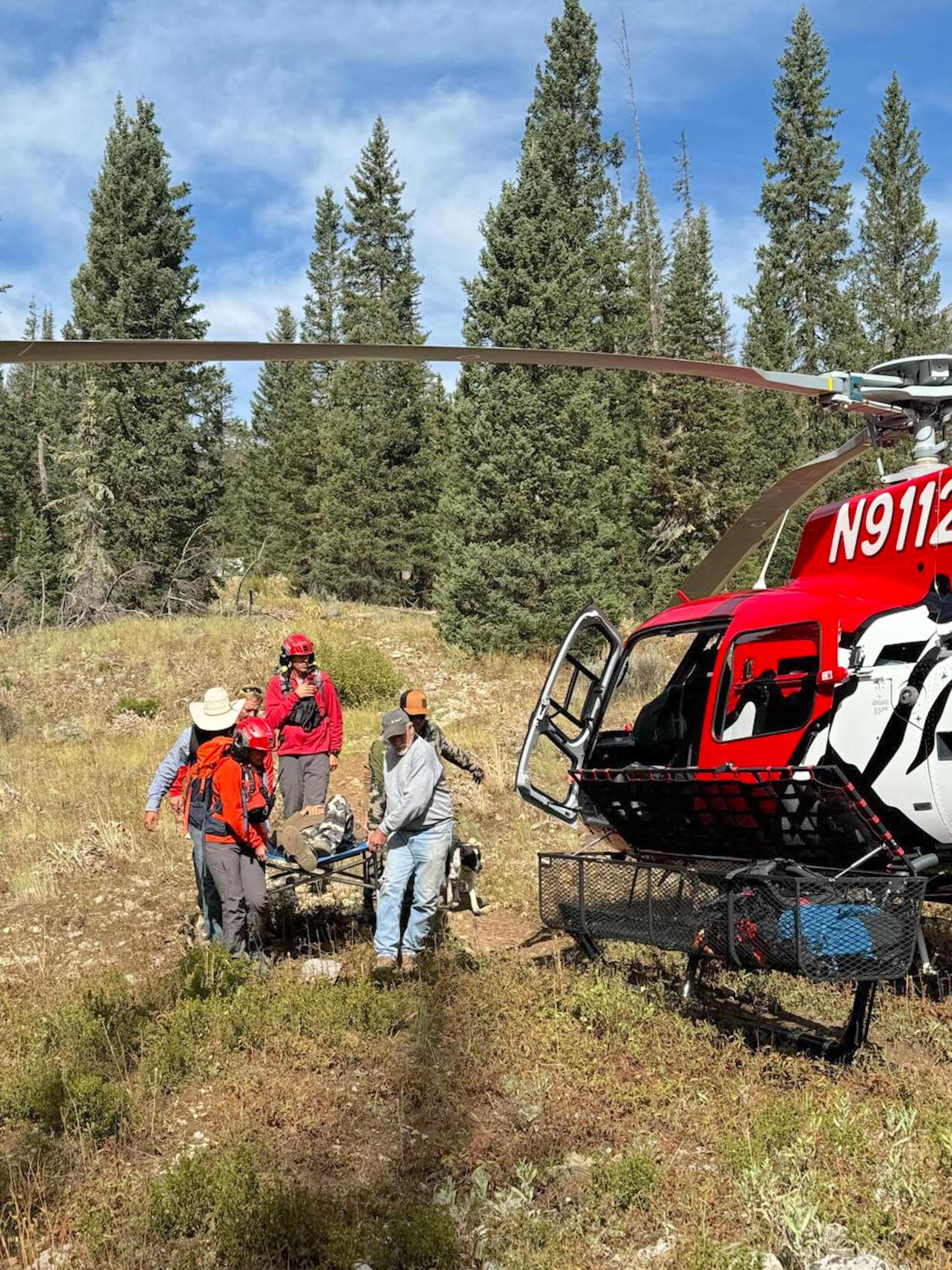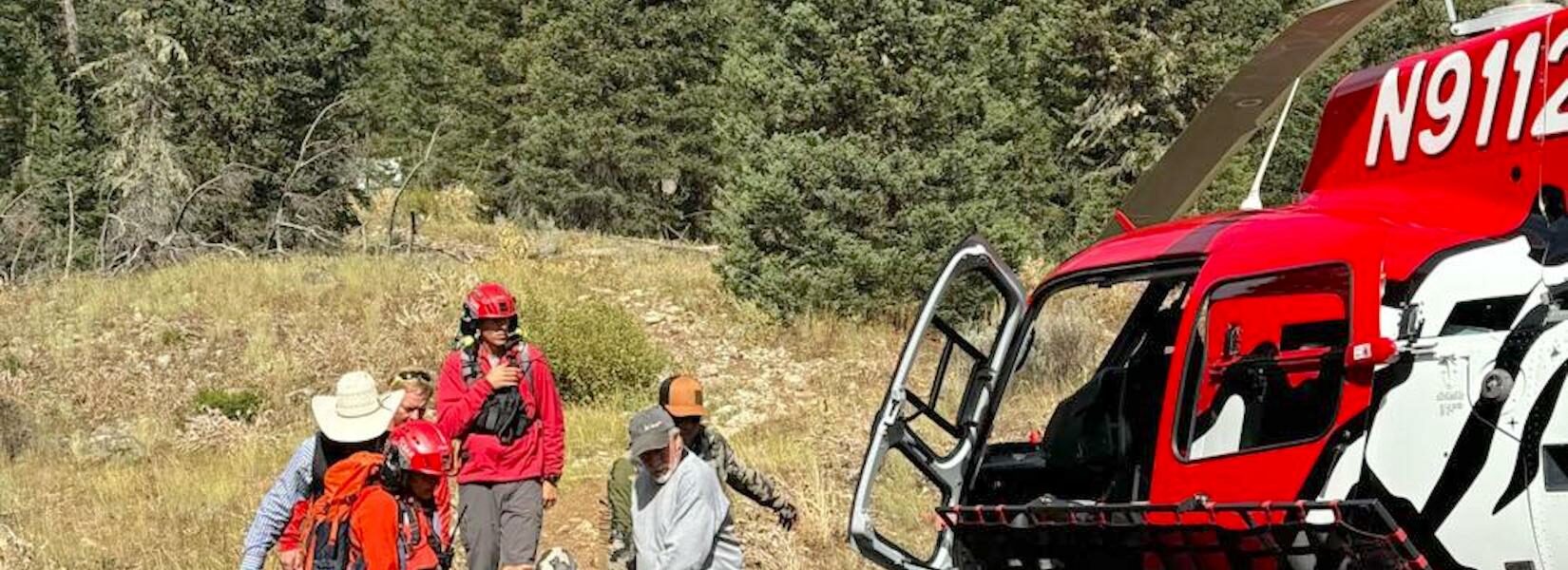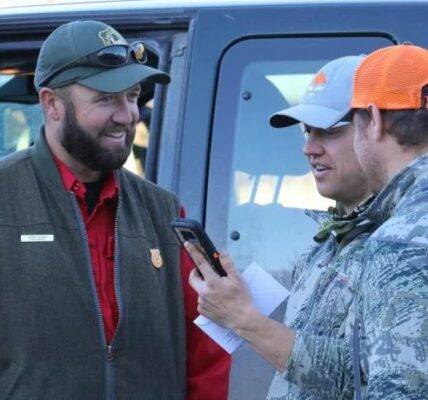
By Charley Sutherland
Jackson Hole News&Guide
Via- Wyoming News Exchange
JACKSON —Teton County Search and Rescue had busier shoulder seasons and rescued a higher percentage of women in 2024 than in previous years. That’s according to its annual report, released Monday.
Search and Rescue had one of its busiest winters last year and one of its busiest summers in 2022.
This year, TCSAR had fewer missions than in each of those periods, but more people needed rescue in April than they did last year and more people needed rescue in September and October than in 2022.
“The way that the Search and Rescue team approaches the offseason is that there is no offseason,” said Matt Hansen, communications director for the Teton County Search and Rescue Foundation, its nonprofit arm.
Hansen said Search and Rescue is seeing more calls from ski mountaineers in the spring. But generally, the organization receives fewer calls from lost hunters due to advances in mapping apps.
This year women accounted for a larger chunk of rescues, about 45%, than in previous years. Men still comprised the most people needing rescue.
The winter 10-year average, reported last year, was 70% men.
It’s hard to know exactly what to attribute that shift to, Hansen said, but perhaps there are just more women getting after it in the backcountry. The foundation, he said, sees “incredible engagement” from women in the classes it offers.
TCSAR rescued nearly the same percentage of Jackson Hole residents, 33%, as the organization did visitors, at 32%. However, 10% of people requiring rescue come from other locations across the region.
Search and Rescue did not determine where the remaining quarter came from.
People tend to think Search and Rescue spends all its time rescuing out-of-towners who’ve gotten in over their head, Hansen said. That really isn’t the case, as most people have at least some familiarity with the area.
“Most of the people that we rescue either live in Jackson or in neighboring communities,” Hansen said.
Young people accounted for a higher percentage of Search and Rescue missions this year than last year.
Over the summer, folks 16 to 30 years old needed rescue most often, at 38%. One fifth of patients were 31- to 45-year-olds, and another fifth were 46- to 60-year-olds. People over 60 accounted for 18% of rescues, and the remaining 4% were under 15 years old.
More people over 60 needed rescue last year than any other group, at 26%.
Last year 16- to 30-year-olds accounted for 21% of rescues. About a quarter of rescues were 31- to 45-year-olds, and a quarter were 46- to 65-year-olds.
Hikers needed rescue most frequently, with 26 rescues since the beginning of December last year. TCSAR rescued 24 skiers and snowboarders, 14 snowmobilers, eight horseback riders, seven ATV and other summer motorized recreationists, five mountain bikers and five hunters.
That distribution is pretty typical, Hansen said. The term “hikers” encompasses pretty much anyone on foot, so trail runners and backpackers are included.
Year to date, the search team has had its second-highest call volume ever, behind only 2022. The organization has received 130 calls for service since last December.
Search and Rescue missions include short responses to turned ankles on the Town Hill, all-night operations on rugged peaks and nearly everything in between.
In September, a California hunter slipped and was injured on Mount Leidy. Nine search and rescue volunteers drove a truck and then a side-by-side vehicle as far as they could through thick timber. Volunteers reached the hunter by 2:30 a.m. and transported him to St. John’s Health.
TCSAR, with help from Grand Teton National Park’s Jenny Lake climbing rangers, removed the body of a deceased trail runner in the Indian Peaks Wilderness of Colorado in October. Departing from Granby, rescuers spotted the man in rugged terrain near the 13,146-foot Arikaree Peak and suspended a rescuer on a fixed line to recover the man’s body.
Search and Rescue had 28 missions in Grand Teton National Park, 19 in Caribou-Targhee National Forest, 17 in the Togwotee Pass area, 14 in the Gros Ventre Range, 13 in the Jackson Hole Mountain Resort backcountry, 11 on Teton Pass, five at Snow King, three in Yellowstone and three in other counties.
In his letter to open the report, chief advisor Cody Lockhart said TCSAR’s team mentality makes the organization as effective as it is.
“Within our team, there is a culture of finding where you can be the most helpful and then proudly filling that role. It is not about being a hero or an all-star — it is about being the best teammate possible. It is not about getting credit for the job — it is about making sure the job gets done,” Lockhart said.
The organization acquired its own helicopter last year. That has allowed TCSAR to assist partner rescue teams, like the organization did in Colorado.
It also means Search and Rescue is not scrambling to find a chopper when people need help, Lockhart said.
“We just load up the ship and go,” he added.
TCSAR is accepting applications to join the team for 2025. Being a team player will distinguish applicants, the report said.




